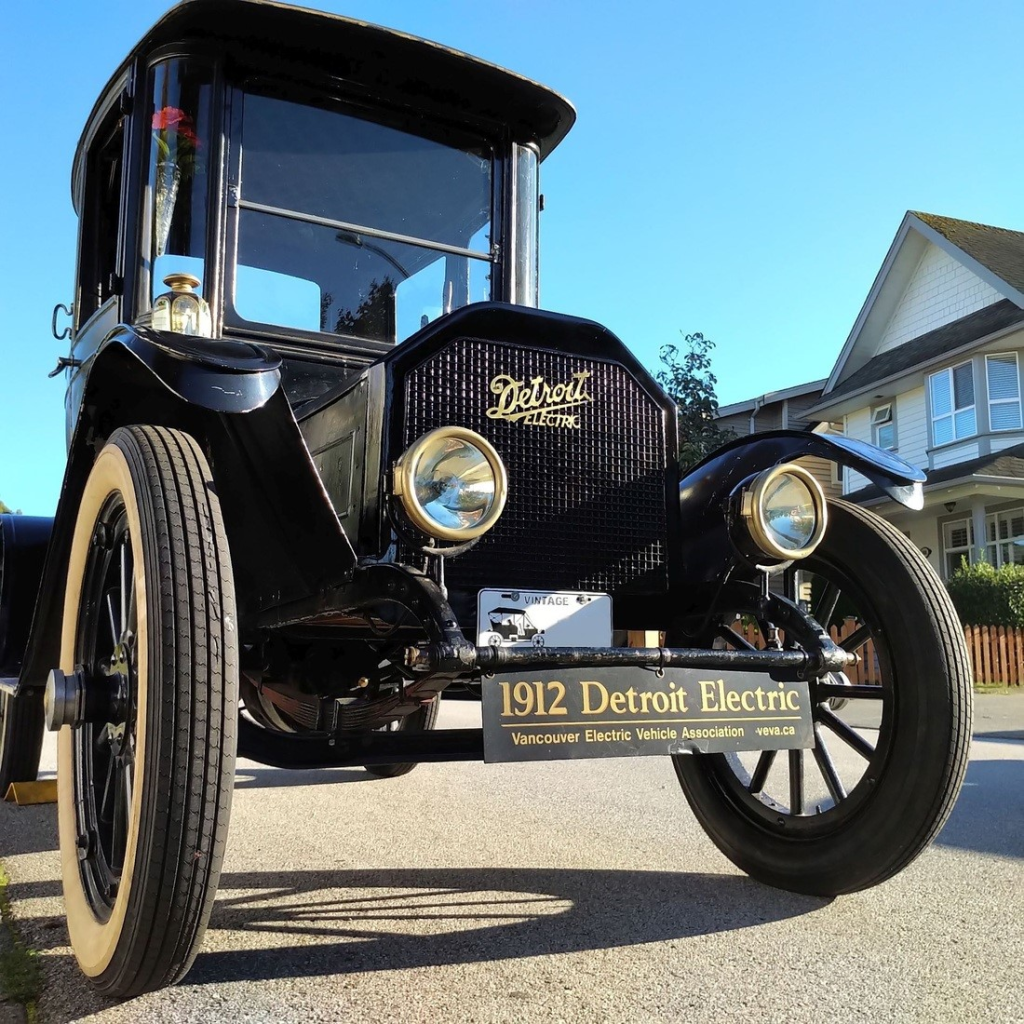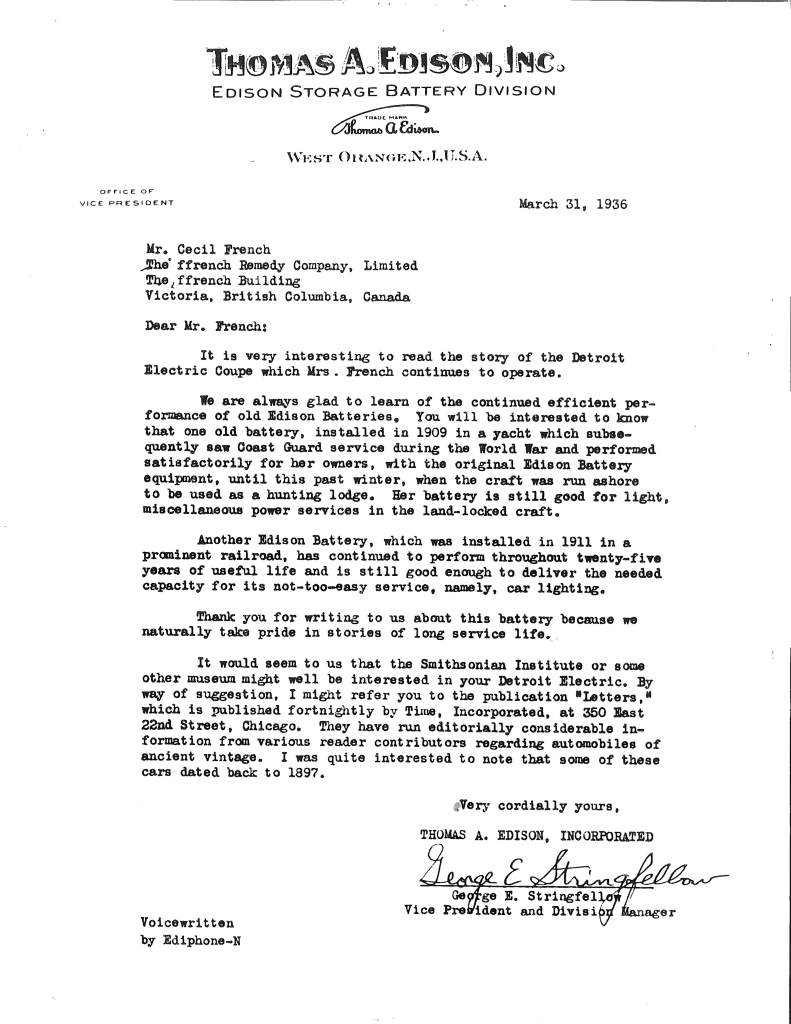Long before modern EVs like the Mustang Mach-E or F-150 Lightning, electric cars were already carving out their place in automotive history. One shining example is the 1913 Detroit Electric Model 38, now preserved by the Vancouver Electric Vehicle Association (VEVA). Built by the Anderson Electric Car Company, this three-person coupe highlights just how advanced EV technology was more than a century ago.

Originally owned by Dr. Cecil and Florence French, the vehicle was part of their lives in Victoria, BC, where they famously lived in the Empress Hotel. Florence became the hotel’s longest-staying guest, and the couple drove their Detroit Electric until the early 1950s before selling it to BC’s first car collector, Phil Foster. Remarkably, the car remains in its original working condition today, with the only modern update being replacement batteries.
The 1913 Detroit Electric featured technology well ahead of its time. Its steering and speed control were handled with tillers, one in each hand, while braking was managed by floor pedals connected to dual brake shoe sets on the rear wheels. Under the seat sat a mechanical controller, while its nickel-iron batteries—originally designed by Thomas Edison—powered the coupe with around 80 volts of energy. Those Edison batteries lasted decades before being replaced in 1993, showing their durability.
This historic EV not only demonstrates the innovative spirit of early electric cars but also serves as a reminder of how long automakers have been experimenting with sustainable mobility. More than 110 years later, Ford continues to push EV technology forward, connecting the past with the future of driving.

